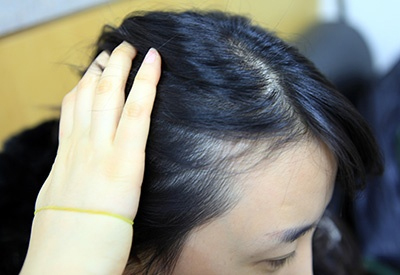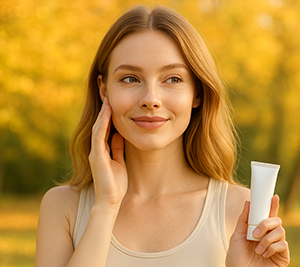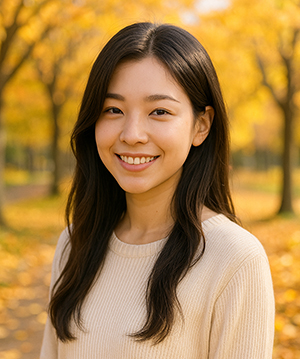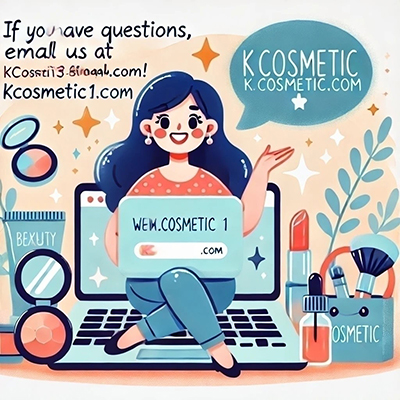2025 K Cosmetic November News Letter
◎ 37% of Hair Loss Patients Last Year Were in Their 20s and 30s ◎
Smoking, Obesity, and Stress Among Main Causes Rising Cases Among Middle-Aged Women
According to recent data, four out of ten patients who visited hospitals for hair loss last year were in their 20s or 30s. Based on data obtained by Representative Kim Ye-ji of the National Assembly’s Health and Welfare Committee from the Health Insurance Review and Assessment Service (HIRA), the number of patients who visited medical institutions for hair loss increased from 234,780 in 2020 to 241,217 in 2024 — a rise of 2.7% over four years. This statistic only includes patients diagnosed with hair loss diseases covered by national health insurance, such as alopecia areata. It does not include cases treated for aesthetic purposes or hereditary and aging-related hair loss. Notably, the proportion of young patients has increased significantly. In 2024, 39,079 patients were in their 20s, and 51,619 were in their 30s, accounting for a combined 37.6% of all hair loss patients. The number of patients in their 40s and 50s stood at 54,724 and 46,913, respectively. 
The rise in younger patients has been attributed to westernized dietary habits, stress, smoking, lack of sleep, and unbalanced nutrition caused by excessive dieting. Professor Kwon Oh-sang of the Department of Dermatology at Seoul National University Hospital stated, “The major causes of hair loss include genetic predisposition and aging. However, environmental factors such as smoking and obesity also play a significant role. The increase in obesity among young adults is contributing to the growing prevalence of hair loss.” Hair loss among middle-aged women is also on the rise. Among hair loss patients in their 20s to 40s, women accounted for 37.2%, while the proportion rose to 49.7% among those in their 50s and 60.2% among those in their 60s. Experts attribute this to hormonal changes associated with aging. By type, alopecia areata accounted for 177,371 patients last year, or 72% of the total. Male-pattern baldness was reported in 25,776 cases, and other forms of hair loss totaled 31,395 cases. Since hair loss is a gradual process linked to hair follicle aging, specialists emphasize the importance of early management before symptoms become severe. While it is normal to lose about 50–100 hairs a day, losing more than 100 may indicate hair loss. Thinning of hair around the forehead compared to the back of the head, or an unusually oily scalp, are also early warning signs. Experts advise that “to prevent hair loss, one should avoid smoking, heavy drinking, and irregular sleep patterns, and maintain an appropriate weight through consistent aerobic exercise and a balanced lifestyle”(Chosun Ilbo, October 9, 2025). (Click Here)
◎ Seasonal Skincare Tips ◎
The past summer was exceptionally long and hot. While your body and mind may have felt exhausted, your skin likely endured an even harsher ordeal. Intense ultraviolet rays damaged the collagen and elastin fibers within the skin, while high temperatures and humidity disrupted the delicate balance of oil and moisture. Although an increase in sebum production may have made the skin’s surface appear oily, in reality, it was likely suffering from dehydration deep within. As temperatures and humidity begin to drop, the skin rapidly loses moisture, weakening its barrier function. With fluctuating temperatures between day and night, blood vessels repeatedly constrict and dilate, slowing down the skin’s metabolism. Dry and cold winds cause flaking, while the compromised skin barrier becomes more vulnerable to external irritants, increasing the risk of inflammation and breakouts. Without proper recovery from summer damage, the skin’s aging process can accelerate throughout the winter. This is why anti-aging care becomes especially important in autumn — a crucial transitional period for maintaining healthy skin throughout the year. 
Proven through years of dermatological research, evidence-based anti-aging care has always emphasized scientific efficacy and visible results. Recently, a new concept has emerged — time-proof skincare. This idea centers on the cumulative, long-term benefits that consistent product use can bring. Key active ingredients include retinol, which promotes cell regeneration and collagen synthesis; peptides, which strengthen the skin barrier and enhance elasticity; and hyaluronic acid, which helps retain moisture and maintain firmness. These ingredients, clinically tested for safety and effectiveness, deliver scientifically verified results such as wrinkle reduction, improved hydration, and enhanced resilience. When used consistently, their effects go beyond simply smoothing wrinkles — they optimize cellular functions and extend the vitality of the skin. This aligns with the latest skincare trend of promoting longevity and wellness from within. Especially during seasonal transitions, when skin sensitivity peaks, choosing trustworthy formulations and maintaining a consistent routine becomes the most powerful weapon in the fight against aging(HyangJang No. 668).
◎ Personalized Anti-Aging Care ◎
Although we all wish to turn back the clock on our skin, the changing of seasons is a time when we become particularly mindful of aging care. Especially now, as we recover from summer damage and prepare for the coming winter, this period is known as the “golden time.”What you do now determines the future of your skin. Aging accelerates through invisible internal reactions triggered by external stimuli. Oxidative stress caused by free radicals, damage induced by glycation, and ultraviolet radiation all lead to wrinkles, loss of elasticity, and pigmentation. 
Therefore, fundamental anti-aging care begins with managing the skin’s internal environment.Antioxidant ingredients act as shields that protect cell membranes and DNA from damage, while supporting the skin’s natural regeneration. When combined with anti-glycation ingredients, they help prevent the deformation of collagen and elastin, preserving the skin’s structural integrity. These two components are essential allies in combating the internal stress that drives aging. Even among people of the same age, lifestyle habits, skin structure, and sensitivity to external factors can cause very different aging symptoms—such as wrinkles, reduced elasticity, or dryness. This is why personalized anti-aging carehas become a major focus in recent years. It involves developing a customized care plan that considers individual skin conditions—such as barrier function, cell regeneration ability, and inflammatory responses. For those with sensitive skin who find high-performance products difficult to use, or who struggle to change their entire skincare routine, ingestible supplementsor targeted treatments for specific areascan be effective alternatives. The key lies in accurately assessing your skin’s condition and establishing a recovery strategy suited to it. This is not merely about surface-level care; it is a process of helping the skin restore its natural, healthy rhythm from within(HyangJang No. 668).
◎ K-Beauty Must Rapidly Adopt AI to Secure Global Competitiveness ◎
The convergence of advanced technology and AI is emerging as a core competitive edge that goes beyond passing trends to determine the survival of beauty brands. A movement known as the "Digitopia" trend suggests that if K-beauty brands take the lead in adopting this trend, they could significantly enhance their global competitiveness. This outlook was presented in the report “SS 25 Beauty Trend Forecast: Digitopia” by the global trend analysis firm WGSN. WGSN’s report forecasts that consumer-personalized analytics technology will become a core competitive factor in the 2025 beauty market. Big data and AI-based analysis are shifting from an option to a necessity. Only brands that build precise analytical systems will be able to win over consumers' hearts. 
Neuro Beauty: Where Emotion Meets Science The fusion of neuroscience and beauty is leading to the development of products that appeal not just through functionality, but emotionally. As studies show that consumers’ purchasing decisions are more influenced by emotional reactions than by rational judgment, the neuro beauty sector is expected to experience rapid growth.
AI-Led R&D Revolution AI is revolutionizing the paradigm of cosmetic ingredient development. It can identify effective ingredient combinations in just a few weeks—something that would take humans decades to discover—dramatically accelerating product development speed and efficiency. The integration of AI and cosmetic expertise could enable Korean brands to establish unique and proprietary intellectual property (IP). While Korean consumers are already familiar with personalized analysis and recommendations, taking this to the next level through AI and machine learning could substantially boost brand loyalty and consumer trust (CMN, May 23, 2025).
The 2025 K Cosmetic November News letter was published by K Cosmetic Inc.
For more information, please visit our website at www.kcosmetic1.com.
If you have any questions, feel free to contact us via email at kcosmetic19@gmail.com.

|